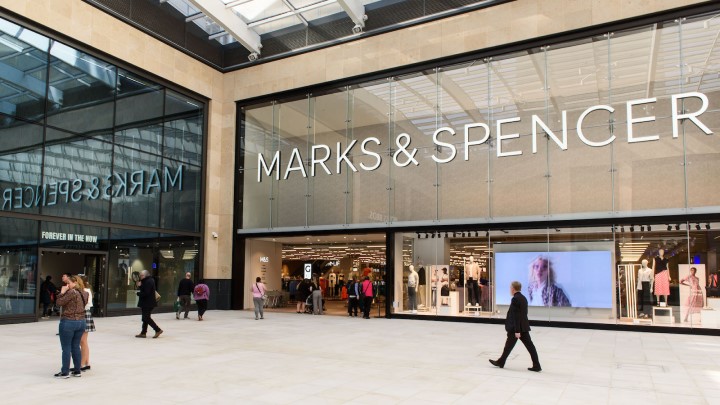Retail trends tend to surface in the UK and Europe about 12-24 months before they reach Australia. That’s what took me to the UK this month for a fact-finding mission. On the ground, I can report that there are challenges facing UK and European retailers that savvy Australian retailers can learn from to plan ahead. In all these markets, the conversation is hyper-focused on inflation and its impact on the cost of living. Prices continue to rise while retailers bear the brunt of consumer ire; ho
however, some retailers, such as Aldi, are seeing the upside as consumers seek value.
In the UK, value retailers like Iceland, Aldi and Asda have been increasingly aggressive against the perceived premium retail offerings of M&S and Waitrose. It’s interesting to see both Waitrose and M&S running campaigns you’d never have seen in the past, with price promises, price matching and price-down promotions.
‘Shrinkflation’ rampant in Europe
In European retail, the biggest talking point isn’t inflation but rather ‘shrinkflation’. The term has entered the public lexicon and led to a backlash from consumers and, most strikingly, from retailers.
Shrinkflation refers to the reduction of product sizes, which saves costs but usually means the now smaller product maintains the original price. Brands obviously don’t advertise the fact and it is seen as pulling the wool over shoppers’ eyes.
The practice can blow up on businesses. There was the infamous case of Toblerone, which increased the space between the peaks in its chocolate bars, which meant it could use 10 per cent fewer ingredients.
In the UK and Europe more generally, shrinkflation is absolutely rife at the moment. A quick trip to Tesco and Sainsbury’s provides more than a dozen examples, including Penguin, the UK’s Tim Tam equivalent, which has reduced packs from eight bars to seven for the same price. Similarly, Lurpak is charging the same for 200g packs that used to be 250g.
It’s become a huge talking point and Carrefour in France has raised the stakes by highlighting products on the shelf that have indulged in the practice, including Lindt and Lipton Iced Tea. Coincidently (or not), the supermarket has timed this approach to take effect alongside contract talks with major suppliers like Nestle, Pepsico and Unilever.
This product stigmatisation ultimately comes from frustration that brands aren’t passing on the savings from a drop in raw material prices. In a cheeky move, Carrefour even highlighted that its own-brand products haven’t changed size, despite a price drop.
The five-finger discount
The other big talking point is the epidemic of shoplifting. There are various reasons for this, including police no longer investigating minor shoplifting offences, which has emboldened shoplifters.
The changing face of retail in the UK and Europe is also playing a role. It’s conspicuous, compared with Australian retailers, how few staff there are in-store. In Australia, we’re used to self-serve checkouts, but there is still a decent cover of staff in Woolworths and Coles. In some European stores, there are as few as two staff on hand to service a major supermarket.
WH Smith, in some instances, has no staff on hand, with maybe one staff member out the back of the store. It’s essentially operating an honesty system and it turns out there are a lot of dishonest shoppers.
As shoplifting becomes the norm, more and more products are being locked up. I witnessed one supermarket with a joint of lamb locked in a Perspex box. The epidemic has become so bad that some retailers, such as John Lewis, are asking for a Royal Commission into not only shoplifting, but also the future of the High Street. Which leads me to my next point.
Is High Street shopping really in decline?
The decline in the High Street is a major talking point in the UK, but from my experience, and media reports, it is perhaps overstated.
It’s clear some retailers are struggling and most national retailers are reducing their footprint. But it’s noticeable that Aldi, for example, is rapidly investing in increasing its store footprint, with a plan to open 500 new UK stores.
There has also been a resurgence in independent local retailers as the majors have been consolidating. There could be a positive benefit for local communities as shopping behaviour changes.
It’s noticeable how few of the major retailers have invested in their stores. M&S, Sainsbury’s and Carrefour look tired and there seems to be a lack of both investment in and thinking on core retail principles, such as store layout and merchandising. Woolworths and Coles in Australia more than hold their own against these retailers.
Perhaps most striking in cities like London and Paris is how busy the major shopping hubs are in comparison with Sydney and Melbourne. Both in terms of the hospitality scene and the retailers themselves.
This should be a real wake-up call, particularly for Melbourne but also for Sydney. To compete with these European stalwarts, Australia’s approach to retail needs a radical rethink. It feels like more people have returned to work in London, rather than working from home, and that has helped these cities bounce back with a vengeance.
Plenty of food for thought for Australian retailers.

